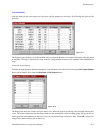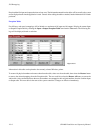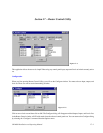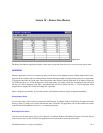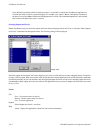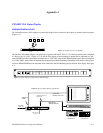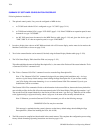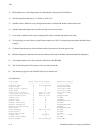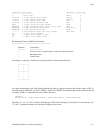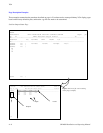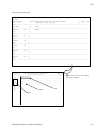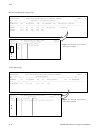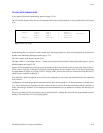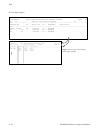VGA
A−3CM 4000 Installation and Operating Manual
CUSTOM DISPLAY FORMATTING
This discussion assumes that the reader is familiar with ASCII file editing concepts and that the procedure described on page
A−2 has been used to create preliminary VGA display pages based on the factory default layouts.
The VGA status display output of the CM 4000 is designed to give a great deal of flexibility to the user in defining what kind
of system information will be displayed at a particular location on the VGA screen. The types of information, or “fields,” that
can be displayed are:
Switcher Output Status (any level)
Switcher Input Status (any level)
Machine Status (Play, Stop, Record, etc.)
Machine Delegation Status
Machine Linkage Status (Which control panel it’s currently linked to)
System Time and Date
System Control Board Status (Active, Inactive)
System Control Board Time Source (Time Code Reader, File Server, etc.)
System Control Board Messages (Also displayed by the logger)
Path Finding (Tie Line) Status (details about Tie Line displays are shown on page A−9)
The type and location of these fields are determined by a user−named text file called the “VGA Page Description File.” This
file is located in the \jupiter\config\configname directory, where configname is the name of the currently selected edit set. The
file is a standard DOS ASCII Text file with “.vga” as its file name extension. The VGA Page Description File can be edited
by the end−user in order to modify existing status pages or create new ones.
Note 1: Initially, there may be two, identical−content .vga files in this directory. Before beginning the customiza-
tion process, you should move any file named “vga−desc.vga” to another directory for safekeeping. (This file con-
tains display pages with the original factory default formatting.)
The following instructions explain how the display fields are positioned, defined, and colorized. After the VGA Page Descrip-
tion File is edited, the Edit set must be compiled and downloaded in the normal manner. Be sure to keep copies of known−good
VGA Page Description Files (.vga files) in another directory. Once the .vga Page Description File has been customized,
the Generate VGA Files command should NOT be used.
Note 2: The character used to separate “fields” is a <TAB> character, so any text editor used must be able to gener-
ate “straight ASCII” and a <TAB> character (WordPad and Notepad work well). Do not use MS−DOS “EDIT”
or any other word processor that substitutes spaces for the <TAB> character—this will cause unwanted results on
the VGA display.
VGA Page Description File Definitions
Basic Rules:
1) All field definitions that are a capital letter define a system name that will be used by following status fields until re−de-
fined with another system name.
2) All field definitions that are a lower−case letter are a status field, and use previously−defined system names applicable
to the given type of status.



